What is social anxiety disorder?
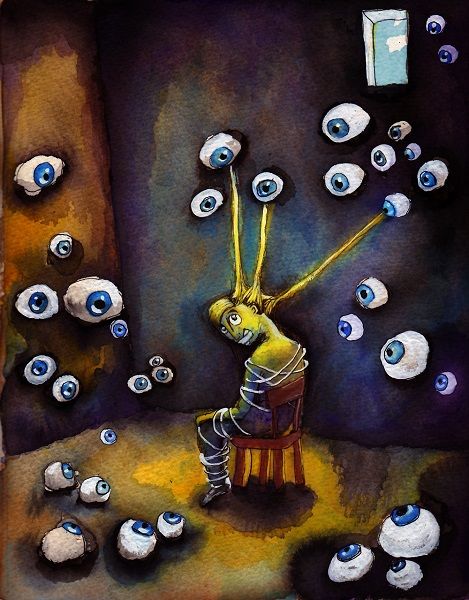
Almost everyone, at least once in their lifetime, has experienced anxiety and strain in various social situations, usually associated with communication, and the potential "danger" person to be judged, compared, selected, and so on. Social anxiety is at the same time linked to the endeavor to make a good impression and our terrible uncertainty that this will really happen, with the fear that we will be rejected. These fears can rarely precede the event itself with days and hours, and are associated with intense physical manifestations (shaking hands or voice, sudden flushing, stuttering, sweating, fainting, numbness, leg cuts, etc.) that manifest themselves in the problem itself, but only in the perception of it. This type of experience makes people try in any way to avoid participating in the awake fear of rejecting situations - then we are talking about a social phobia.
Not all people with symptoms of social phobia have the same fears. Some are afraid they will think of them as ugly or badly dressed, others think they look in the eyes of the surrounding stupid, clumsy and shy, and others are convinced that people in particular social situations are just waiting for them to expose and fail something to make fun of them then. But anyway, those who suffer from social phobia imply a negative opinion of themselves about others - they expect that they will certainly notice something bad in their behavior, appearance, presentation, etc. Some of the people with social phobia are afraid of the consequences of social contacts and social participation at large - they often say to themselves: "... I do not like to be a focus of attention; I can not make it; better someone else to say for me ... "and so on. For others, it is more important that their idea of self-importance coincide with the opinion of the others: "... if I blush, entering the office, they will immediately think that I am a dull and shy one and they will not look at me seriously ...; if I'm wrong and a ton during the concert, they'll think I'm a mediocre musician ... "
Social phobia and psychiatric classifications
According to the International Classification of Diseases - X Revision, social phobias fall into anxiety disorders and often begin in adolescence and focus on fear of criticism by other people in relatively small groups, usually leading to social situations being avoided. Social phobias can be discreet (in other words limited to situations like eating in public places, speaking to the public, meeting the opposite sex, etc.) or diffuse - involving almost all social situations outside the narrow family circle. It may be the fear of vomiting in public. Direct face-to-face confrontation can be particularly stressful in different cultures. Social phobias are usually accompanied by diminished self-esteem and fear of criticism. They can often manifest as complaints of flushing, shaking hands, nausea or urinating urgency. The patient is sometimes convinced that one of these secondary bodily manifestations of anxiety is, in fact, his main problem; symptoms can sometimes be complicated by panic attacks. Avoided behavior with regard to problematic situations is very clear and in extreme cases can lead to almost complete social isolation. Generally speaking, in social phobia, one is afraid of a range of social situations that can be assessed - for example, a presentation to a group of people. In such a situation, a person suffering from a social phobia is predicting negative self-esteem and is afraid of that. This fear may undermine or compromise its performance, and this further frightens the anxiety - the person becomes more anxious. Typically, the symptoms of social phobia in the majority of cases are less pronounced than those described above, and then it is appropriate to talk about symptoms of social anxiety. Signs of social anxiety are a normal occurrence in certain, specific situations of public expression. They help to mobilize for better performance, continuously taking into account the audience's reactions and giving him the chance to some degree model their behavior towards these reactions. There are two extreme variants of behavior in these specific situations - in some cases, one worries to the extent that they give up prematurely to an audience, and the other extreme is when one is uncritically present to the audience without being interested in the echo that his appearance provokes in people. Situations in which symptoms of social anxiety are manifested are most varied. The common concern is that these are situations of social participation where there is a possibility for a person to be actively, carefully and thoroughly monitored and therefore there is an opportunity to be criticized, the root of this disorder is the fear of negative assessment or rejection by other people. In other words, the main symptom of social phobia is a strong and time-stable fear of embarrassment and humiliation in public places (in social situations). The worry is also felt when predicting the possibility of falling into such a situation. Social phobias may focus on partial aspects of social participation such as speaking, eating or writing to an audience, visiting a public toilet, etc. However, it is usually more comprehensive and manifests itself in more than one specific situation of social participation. One of the most common situations causing symptoms of social anxiety is talking to an audience.
Of course, there are a number of cultural and individual features. For example, some people with social phobia feel more comfortable when they show up (eg talk) to an unknown audience and become more alarming in a more immediate environment; others feel better when they show themselves to people who know each other well and whose reactions they know well and have difficulty in establishing new relationships. In short, social phobia is an acutely onset of intense anxiety in the typical situations of social participation described above. Symptoms are similar to those of other anxiety disorders and are subdivided into three types: vegetative (bodily), behavioral, and subjective (emotional and cognitive). Patients more often present complaints related to body symptoms of anxiety (eg blushing, shaking hands, dry mouth, palpitations, sweating, fainting) as a major problem. Some of the modern classifications of psychiatric disorders distinguish two variants of social phobia: generalized and specific (limited) social phobia. Generalized social phobia is often a chronic problem and significantly impairs social functioning. It is characterized by avoiding most public situations (including almost all social situations outside the family circle), which can be difficult to distinguish from anxiety personality disorder (avoiding contact personality) and agoraphobia (fear of leaving the home). In a specific social phobia, symptoms develop only in a small number of specific situations (eg public speaking, eating in public, meeting with the opposite sex, etc.). According to the Diagnostic Classifier of the American Psychiatric Association, social phobia is underlined and persistent fear of one or more situations in which the subject is subjected to careful observation by others and fears that he can do something or do so (or will show symptoms of anxiety) that it causes humiliation or shame. Examples: Inability to continue speech in a public speech; fear of choking when eating at a restaurant together with other people; fear that he will not cope with urinating in a public toilet; fear that his hand would start trembling when writing in the presence of others; fearing he would say something stupid or that he would not be able to answer a question in a public situation. These situations are avoided or are subject to intense anxiety. The avoidance behavior interferes with normal life or social activity, as well as with relationships with other people, or man experiences severe suffering from experiencing this fear. At the same time, patients understand that their fears are disproportionate or unrealistic.
Some people suffering from social phobia to relieve symptoms of anxiety, drink alcohol, and alcohol abuse in people with this disorder is more prevalent than in healthy ones.
What is the spread of social phobia
Social phobia is one of the most common anxiety disorder among the population. In the populations of North America and Western Europe, approximately 10% of the population at some point in their life had apparent symptoms of social phobia. It has been found that 3-13% of people in the general population at a certain period of their life have suffered from anxiety related to their presentation to a group. The percentage of people who suffer from social phobia throughout their lives fluctuates between 1 and 2.5 percent. Research shows that about 90% of respondents have affirmatively answered the question whether they felt timid and uncertain about more than one social situation at some point in their lifetime, and 30-40% have identified themselves as shy at the present time as well. Most of the more recent research finds that in certain parts of the world, from symptoms of social phobia, women are affected by up to twice as many men as a number of cultural factors matter. The lowest incidence of this disorder was found in Seoul and Taiwan - 0.5% life-threatening illness for the general population, but women are also twice as affected by men. Studies that establish such low levels of disease are based on the DSM-III criteria and can not be valid for the so- "Subtly" pronounced social anxiety, which is very common. The two levels of severity of social anxiety outlined in epidemiological studies are based on the amount of symptoms, the severity of avoidance behavior and, respectively, the degree of disruption of social functioning. Using this approach, some researchers (Lepine et al.) Found that 7.3% of people report moderate social anxiety at some time in their lives (2.3% currently experience this condition), whereas only 1.9% severe social anxiety at some stage in their lives (Lepine & Pelissolo, 1997). The results of a new study conducted in Basel show a lifetime disease of 16% (Wacker et al., 1992), while another one conducted in the United States (National Comorbidity Survey, NCS) found 13.3% (11.1% and 15.5% for women, and 30 days of disease was 3.8 and 5.2% respectively) (Kessler et al., 1994, Magee et al., 1996). Both DSM-IIIIII-R diagnostic criteria were used in the two cited investigations. When using ICD-10 (International Classification of Diseases - 10 revisions), 9.6% (NCS) lifetime disease was established in the same population. This difference highlights the importance of the classification system used. For example, one of the conditions to diagnose social phobia according to ICD-10 is to "avoid phobias whenever possible". Avoided behavior, however, is characteristic of the more heavily expressed forms and should not be regarded as a condition for the existence of a social phobia, but only as an indicator of its severity.
When does the social phobia arise?
Usually the fear of communication and related behavioral deviations occur between 15 and 20 years of age. But often people who have such adolescent problems say that they have been shy of a much older age and have preferred to avoid encounters with strangers or poorly known people as their children have increased their anxiety in proportion to the social coercion . For the first time, the age at initiation of the disorder was studied in a subset of 97 individuals with social anxiety. An average age of 15.5 years was established with two spikes: in the range of 0-5 years and 13 years.
How does the social phobia arise?
"... Well, just like that. It was very easy. Your whole life is totally fucked (and from the very beginning). You can not achieve anything. You are totally unsure because you can not behave like others (for example, they are afraid to go to the store because the vendor may look crooked if you stumble for example (and for fear of being exposed you are 100% exposed) You have no friends When a chick speaks to you, for example, you are all greening and reddening in fear and you only think of how to get rid of the situation In time, you are packed with complexes and after them come the strong depressions I've chosen where to jump (I'm talking about suicide, no and a sunny day, you understand what a social phobia is, you read all the lyrics in the net, you understand that the writer you write about them, and you realize that you are not a totally crazy alien, but you just have a phobic. . " Various theoretical paradigms can be used to explain the symptoms of social phobia. Here we will present a part of the cognitive model, according to which emotional problems arise from the way in which one organizes and interprets reality. They arise as a result of learned relationships or assumptions that one has been using at an early age to understand the world. People are upset not by the events and situations that arise, but by the personal importance they have for them. When the meaning is negative, the result is a negative emotion. The same event has different meanings for individual people (or even for one person but under different circumstances). In everyday life there are many situations that are objectively dangerous. In these situations, people's perceptions often give a realistic assessment of the threat. Cognitive theories postulate that in anxiety, individuals systematically overestimate the danger. Such overestimation automatically and reflectively activates the "anxiety program". When a particular situation is mistakenly perceived as threatening (false perception, negative automatic thinking), the responses activated by the anxiety program are inappropriate for the situation. When developing the symptoms of social phobia in a particular social situation perceived as threatening, a series of negative automatic thoughts arise ("I will expose myself, I will tremble !, everyone sees that I am terribly insecure and tense!" If she does not present a brilliant everything is lost! I am stupid and all hates me! "etc.), which give rise to rapid negative emotional responses (anxiety, fear, horror) that in turn cause intense vegetative (bodily) manifestations of fear (trembling , palpitations, etc.), and they in turn accompanied by intensive behavioral reactions (escape freezing, stuttering, etc.). In situations where the symptoms of social phobia arise, a specific "vicious circle" is formed, from which it is practically impossible to come out except by escaping the situation and avoiding the next. This often leads to isolation and a complete disruption of social functioning.
How to deal with social phobia?
Social phobia is a treatable mental disorder. Effective approaches to responding to her symptoms include drug therapy and psychotherapy. Medication treatment involves the use of antidepressants from different groups that affect long-term anxiety and low self-esteem and tranquilizers (benzodiazepines - medications similar to their chemical structure of diazepam) that rapidly and effectively affect the occurrence of fear and anxiety. It is not appropriate for tranquilizers to be used for long-term treatment because there is a risk of developing dependence. These medications need to be written by a psychiatrist, after consulting and identifying the individually adequate medication combination, dosage and schedule of treatment, as well as providing long-term symptom tracking and response. Psychotherapeutic approaches focus mainly on the psychological causes of social phobia and relate to long-term work with a psychotherapist. Different psychotherapeutic directions provide the opportunity to deal with social phobia - psychodynamic, cognitive-behavioral, family, group, etc., but as a whole starting psychological work, it is necessary to assume that "healing" will not become instantaneous and magical, but it will take a while for you to explore and understand your problems and gradually learn how to manage them. The most popular with its success in terms of social phobia is cognitive-behavioral therapy. It focuses primarily on working with negative automatic thoughts and perceptions that highlight anxiety and avoidance behavior as well as specific training in social skills and the formation of alternative strategies to deal with different situations. The attempts show that in a number of cases the most effective coping with the symptoms of social phobia is the combination of drug therapy and cognitive-behavioral approaches.
Reference list:
- David Clark, Anxiety states
- Social Anxiety Disorder, Westenberg
- Cognitive Behavior Therapy for Psychiatric Problems, Ed .: Hawton K., P.M. Salkovskis, J. Kirk, D.M. Clark, Oxford University Press, Oxford, 1989
- Oxford Textbook of Psychiatry, 2nd ed., Oxford University Press, Oxford, 1989
- Kaplan, H. I., Sadock, B.J. (1998). Synopsis of Psychiatry (Eighth Edition).
- International Classification of Diseases - 10 revisions, National Center for Complex Human Research
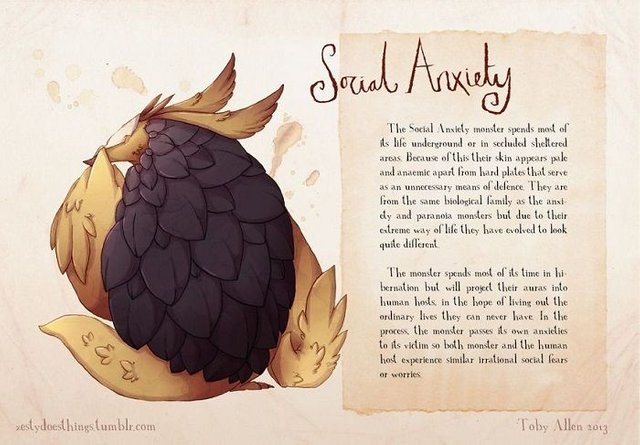
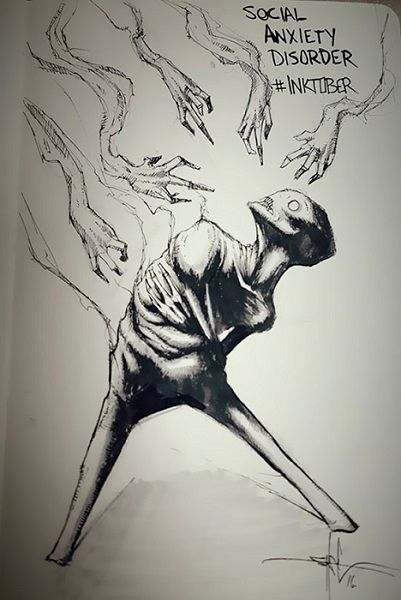
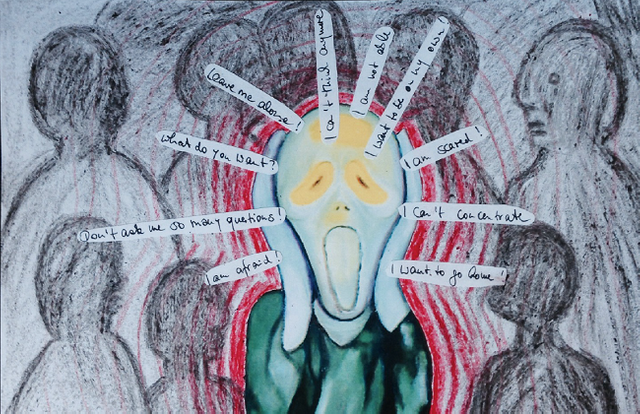
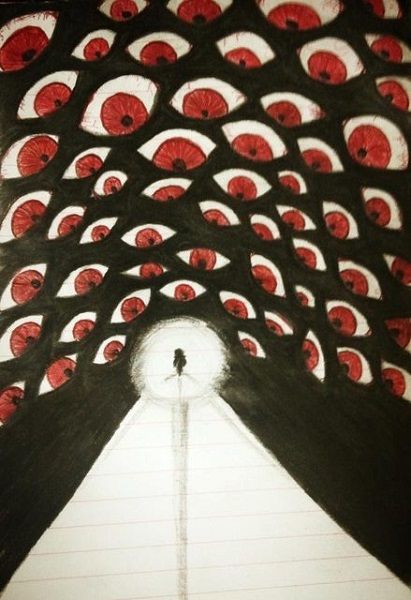
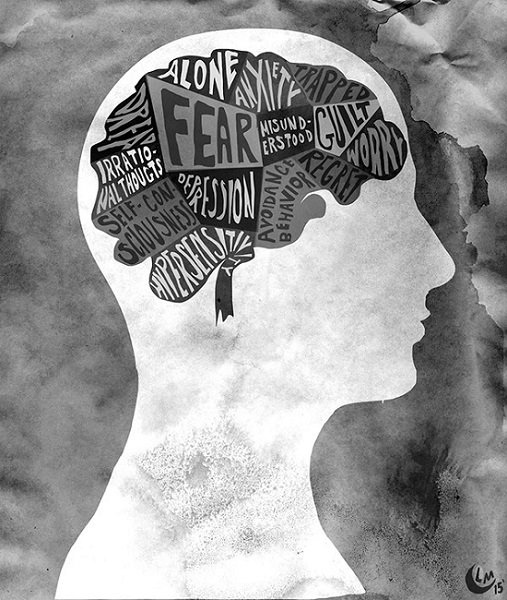
Very interesting article godflesh.
Thank you :)
A lot of info here. Was great to read and understand the anxiety better. Thank you
No problem. You are welcome :)
😊
img credz: pixabay.com
Nice, you got a 39.0% @funny-gifs upgoat, thanks to @daydreaming
It consists of $8.97 vote and $2.99 curation
Want a boost? Minnowbooster's got your back!
The @OriginalWorks bot has determined this post by @godflesh to be original material and upvoted(1.5%) it!
To call @OriginalWorks, simply reply to any post with @originalworks or !originalworks in your message!
img credz: pixabay.com
Nice, you got a 98.0% @askquestion upgoat, thanks to @godflesh
It consists of $11.14 vote and $3.71 curation
Want a boost? Minnowbooster's got your back!